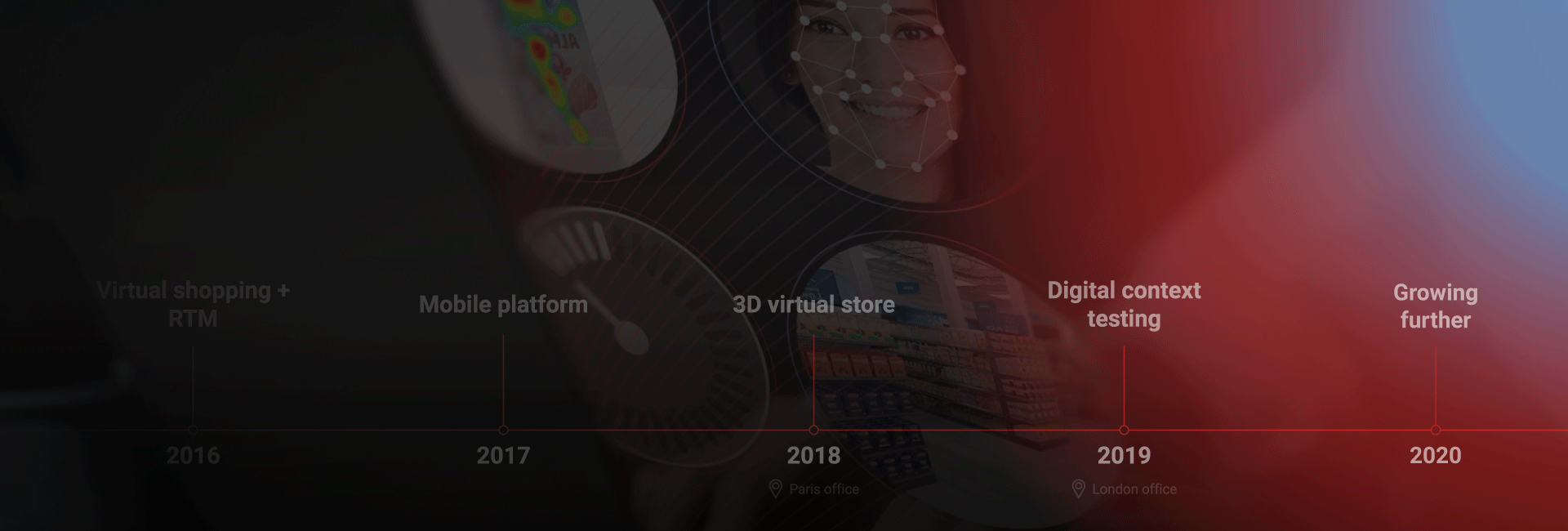For decades, marketers have realized the massive predictive potential of behavioral research methods. However, as recently as 8 years ago, reaching into the behavioral research toolkit was a rather impractical affair for brands, taking up weeks and big chunks of budget. A clever idea by EyeSee’s founders – to use respondents’ own devices and webcams to follow eye gaze – kickstarted a whole revolution in behavioral research, opening it up to further innovation.
The principle of using new tech to solve old market research problems worked well and resulted in our team doubling in size every year to meet growing demand from clients such as Twitter, Microsoft, Colgate-Palmolive, J&J, Bayer, Disney, and many more. Our research approach was recognized by Quirk’s and Deloitte; our teams are expanding worldwide, with new team members in Amsterdam and the US Midwest, and an ongoing expansion to Mexico and Singapore in 2021.
Here are 3 things that breaking new ground (in market research) for the past 8 years has taught us:
Rule 1: Disrupt, rebuild and grow with tech
The pandemic has put the world in a tailspin, as uncertainty loomed over both consumer habits and business decisions. The fast pace of the changing world made one thing clear – in-person testing is no longer a (safe) go-to; a place to look for the best and most innovative research solutions is both behavioral and online.
Tech-enabled research makes it easier to navigate category opportunities through trends as they emerge and stay on top through up-to-date optimization. For instance, brands can now opt to test their marketing materials in realistic virtual replicas of stores, websites, and just about any environment within a couple of weeks. The in-context approach takes into account all platform-specific triggers for consumers and makes for a better indicator of success, whether you are looking into purchase decisions, findability, brand equity, or any other KPI.
Rule 2: Redefine what market research can do for brands
Working in MR entails a set of skills for assessing the pulse of trends and understanding consumers that brands should serve. To tap into the full picture, we base our solutions on a combination of eye-tracking, facial coding, Reaction Time Measurement (RTM), and virtual shopping.
Recently, a study done for Twitter that examined (non)traditional gender roles in sports ads received Best advertising research project recognition at Quirk’s awards. It contributed to the conversation around gender with eye-opening findings and spurred EyeSee to further develop our context-testing Twitter solution and perfect it for future client studies.
It also prompted us to look into other communication streams such as crisis messaging – specifically BLM and COVID-related. Accumulated insights for 6 different industries are at the forefront of (mobile) market research, altogether redefining what research CAN do for brands.

Rule 3: Look into the future to better serve the present
2021 will be about disruption, innovation, and boldness. The entire year, everyone will be out of their comfort zone. To best serve our clients and their needs, we need to be a few steps ahead of them and proactively anticipate how our future solutions fit their business questions.
So, what do we think will be big next year?
In-context solutions that map out the online Path to Purchase or multi-channel brand interactions.
If you aren’t doing this already, this might be the year to step up your social media game and discover a set of best practices for all the channels relevant to your business. Based on your stimuli and content, a study like this can provide you with guidance that reflects each platform’s features, allowing you to leverage them by fine-tuning your content and messaging.
In the NPD arena, there are so many exciting ways you can test and screen your concepts! Creating entirely behavioral and fully contextual exercises delivers performance info on reliable KPIs such as interest, penetration, and value share. Aside from on-shelf concept screening in different development stages, you can also do behavior tracking on live websites, enabling you to place product concepts and asses them on a real website such as Amazon and see how much interest they garner.
—
Finally, all these principles and solutions can be of immense use in all other areas of consumer research. Recreating new contexts in which people interact with your product in any retail environment you can think of – ensures reliable and accurate insights that will help you lead decision-making in 2021.
Want more? Check out fresh perspectives and strategies for MR shared by our young and brightest talents.
